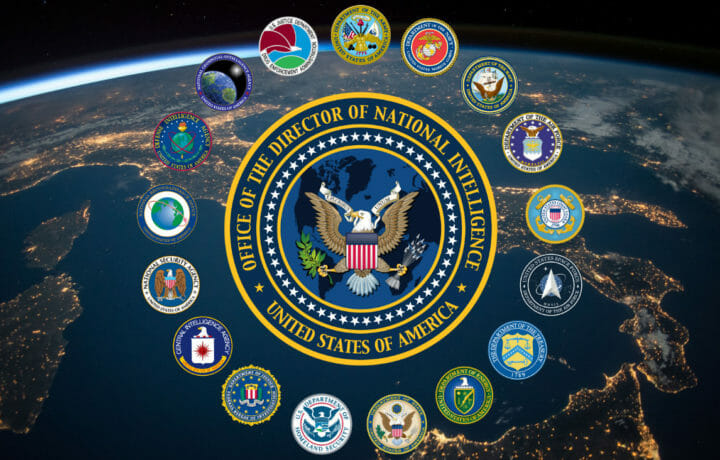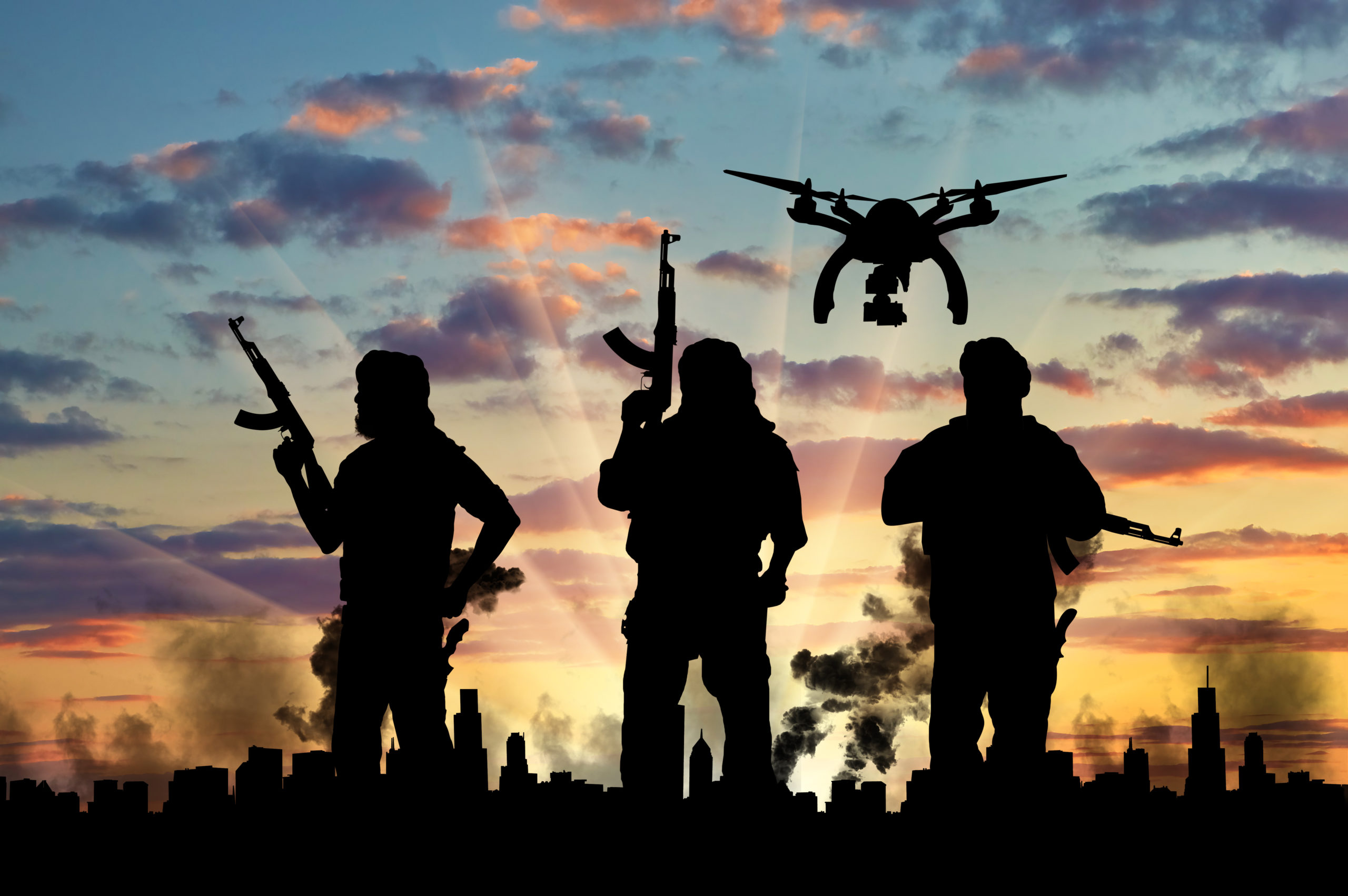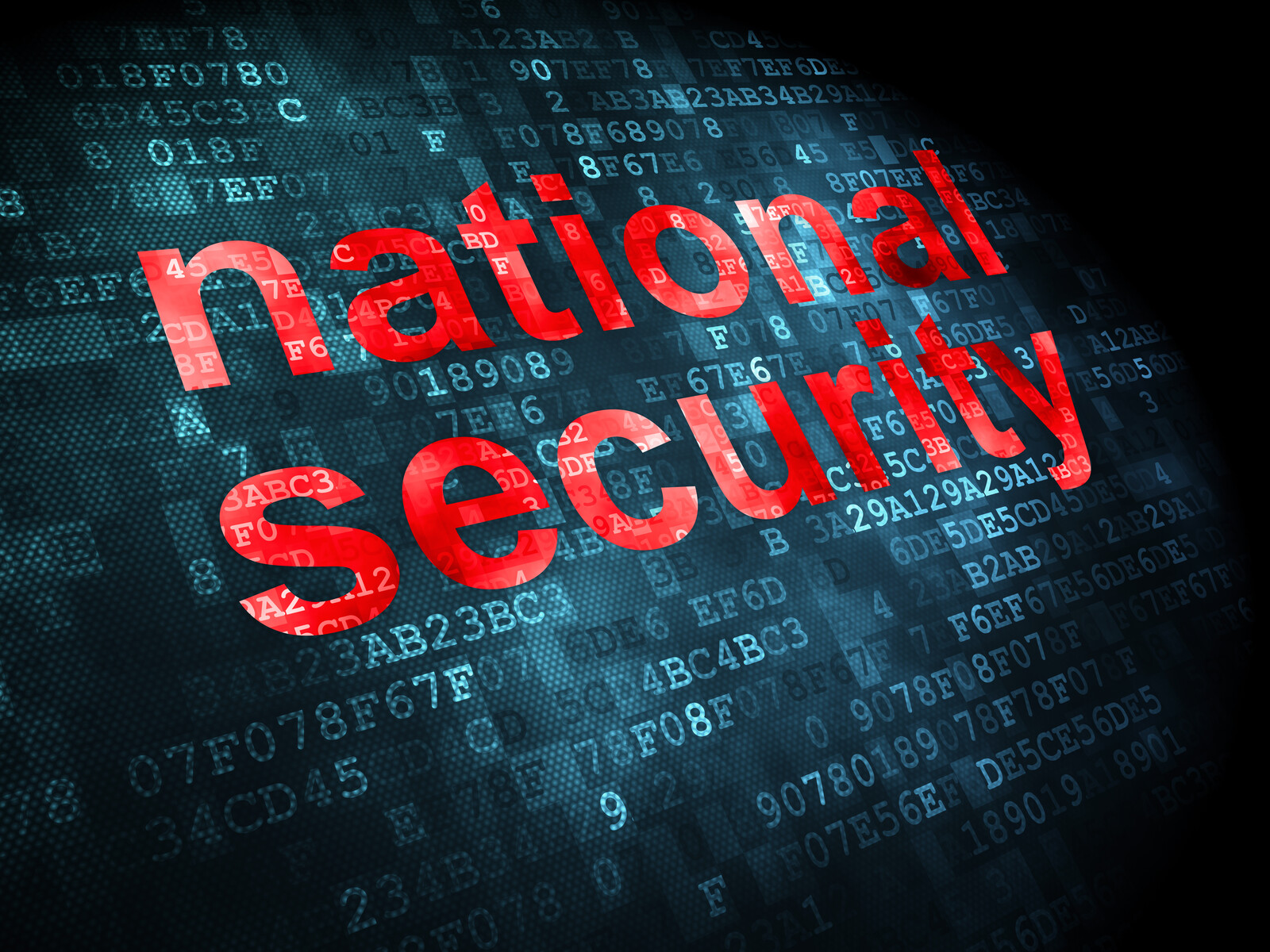1. Introduction: Unprecedented Firings and Their Global Significance

In recent history, few events have rattled the United States national security apparatus as forcefully as the mass firings at the Central Intelligence Agency (CIA) and within the Pentagon. Under the Trump administration, a sweeping wave of terminations targeted high-ranking intelligence officers, senior military leaders, and civilian defense employees. While U.S. presidents have the authority to replace key officials, the scope and speed of these purges are unprecedented, raising urgent questions about their immediate and long-term impact on U.S. security.
At stake is more than just a reshuffling of personnel. National security experts argue that these dismissals erode vital institutional knowledge, hamper ongoing operations, and degrade the United States’ ability to respond to multiple, simultaneous threats—ranging from state-sponsored cyberattacks to international terrorism. Critics also warn that this could serve as a catalyst for further destabilization, undermining global alliances and emboldening adversaries such as China, Russia, Iran, and rogue non-state actors.
Throughout modern history, intelligence agencies and militaries have served as stabilizing forces for nations. Their job is to foresee threats, adapt strategies, and protect national interests under any administration. However, when these agencies are abruptly gutted—particularly in times of global uncertainty—new vulnerabilities emerge. Cybersecurity infrastructures weaken, covert intelligence operations can stall, and military deterrence can falter. This comprehensive analysis unpacks how these mass firings at the CIA and military may spark an era of unprecedented global threats and destabilization, examining the immediate repercussions, drawing lessons from historical parallels, and exploring possible pathways for recovery.
Why This Matters Now
Global power dynamics are in flux. The rise of multi-polar competition, accelerated technological innovation, and ongoing regional conflicts mean that the U.S. cannot afford significant disruptions in its chain of command or intelligence gathering. The mass firings risk creating precisely such a disruption, forcing us to consider whether the United States can maintain its strategic edge—or if it has effectively opened the door to an era of heightened vulnerability.
2. Scope and Magnitude of the Recent Purges
The term “purge” often evokes images of authoritarian regimes cleaning house to consolidate power, yet critics argue that the events unfolding in the United States bear an uncanny resemblance to such scenarios. Reports indicate that over 50 CIA officers were dismissed—many specializing in recruiting new operatives, language services, diversity programs, and covert field operations. On the Pentagon side, the departures include high-ranking officials who have shaped U.S. military strategy for years.
Key Dismissals
-
CIA Officers Specializing in Recruiting and Diversity
- Number Dismissed: At least 51.
- Roles: Ranging from field operatives to senior analysts responsible for recruiting new talent and managing essential diversity initiatives that foster a more adaptive, culturally competent agency.
-
Top Military Officials
- Gen. Charles “CQ” Brown (Chairman of the Joint Chiefs of Staff): As the nation’s top military advisor, Gen. Brown held enormous influence over U.S. defense policies.
- Adm. Lisa Franchetti (Chief of Naval Operations): Her position marked a historic moment for women in military leadership.
- Gen. James Slife (Air Force’s Second-Highest Officer): Critical for overseeing technological and logistical transformations across the Air Force.
- Judge Advocates General (JAGs): Responsible for military law, their removal complicates legal oversight and ethical guidance.
-
Pentagon Civilian Workforce
- Estimated 5,400 Layoffs: This includes logistical experts, policy analysts, and administrative staff who support day-to-day operations and long-term strategic planning.
Immediate Operational Impact
- Crippled Leadership: The abrupt exit of top brass results in a leadership vacuum, especially dangerous for ongoing military operations or crisis management.
- Institutional Knowledge Loss: Decades of specialized experience vanish overnight, forcing new appointees to start from scratch.
- Delayed Responses: The chain of command becomes muddled, slowing the U.S. response to emergent threats.
A Looming Vacuum
Without swift replacements—ideally, individuals who are equally or more qualified—both the CIA and the military risk months or even years of diminished capability. Even a short period of uncertainty can be long enough for adversaries to make strategic moves, whether that involves ramping up cyber espionage, conducting influence campaigns, or testing new military aggressions in contested regions.
3. Historical Parallels: From the 1977 CIA Purge to Stalin’s Red Army
History offers sobering lessons about what can happen when governments abruptly remove critical intelligence or military personnel. While no two situations are identical, parallels exist that underscore the dangers of wide-scale purges.
3.1. The 1977 CIA Purge under President Jimmy Carter
In 1977, President Jimmy Carter initiated a series of changes aimed at reforming the CIA. This led to the dismissal of around 200 officers—nowhere near the scale of the current episode, but still significant. The main outcomes included:
- Operational Weakness: Ongoing covert operations became understaffed, delaying mission objectives and hampering U.S. global intelligence gathering.
- Eroded Morale: Loyalty and trust between field operatives and CIA leadership wavered, affecting recruitment and retention for years.
- Intelligence Gaps: Analysts at the time reportedly missed early indicators of Soviet military expansion, which could have been better anticipated with a fully staffed intelligence infrastructure.
3.2. Stalin’s Red Army Purges (1930s-1940s)
While the Soviet context is drastically different from the modern United States, Stalin’s purges of the Red Army illustrate the catastrophic consequences of eliminating seasoned military leaders:
- Leadership Vacuum: Stalin’s paranoia led to the execution or imprisonment of top generals, crippling the Red Army’s readiness.
- Disastrous Impact in World War II: When Nazi Germany invaded in 1941, the Red Army initially performed poorly due to inexperienced leadership. The cost in human lives and resources was immense.
- Long-Term Rebuilding: The Soviet Union eventually overcame these setbacks, but the toll underscores the dangers of politically motivated military purges.
3.3. Post-Soviet Intelligence Collapse (1990s)
Following the collapse of the Soviet Union, Russia underwent large-scale firings within its intelligence services:
- Opportunity for Foreign Agencies: Western intelligence exploited the chaos, recruiting disgruntled former KGB agents.
- Corruption and Organized Crime: Some ex-intelligence officers funneled their expertise into criminal activities, further destabilizing the nascent Russian state.
Lessons Learned
The main takeaway from these historical episodes is clear: sudden purges compromise readiness, invite exploitation by adversaries, and necessitate prolonged, costly recovery efforts. In every instance, the nations in question faced a sharp decline in their ability to respond to external and internal threats. If history is any guide, the United States could find itself grappling with a diminished global posture, fraught alliances, and emboldened adversaries.
4. Intelligence Breakdown: Consequences of Losing Veteran CIA Officers
Intelligence work hinges on layered expertise: analysts interpret complex data, field officers cultivate informants, and specialized teams develop advanced technologies for espionage and cyber defense. Removing dozens of experienced CIA officers—particularly those involved in recruitment and diversity—reverberates through multiple facets of U.S. national security.
4.1. Loss of Institutional Knowledge
Many of these dismissed officers had developed critical expertise in:
- Cultivating International Assets: Building and maintaining relationships with sources often takes years, if not decades. The sudden removal of these officers can break trust with informants and disrupt the flow of actionable intelligence.
- Language Proficiencies and Cultural Insights: Certain regions require niche linguistic and cultural competencies. Losing such specialists means losing a nuanced understanding of local dynamics, making intelligence collection less effective.
- Long-Term Strategic Planning: CIA veterans often guide overall intelligence strategies, aligning short-term operations with big-picture national security objectives.
4.2. Counterintelligence Vulnerabilities
Counterintelligence units protect the U.S. from infiltration by foreign spies. Fewer experts in these roles translates to:
- Increased Risk of Espionage: Rival nations such as Russia and China may exploit newly created gaps or seek to recruit recently dismissed officers who feel disgruntled.
- Internal Sabotage Concerns: Dismissed personnel might harbor resentment, elevating the risk of leaks—be they intentional or inadvertent.
4.3. Recruitment Disruption
Among those fired were CIA officers specializing in recruiting new talent, including individuals from diverse backgrounds. This has multiple implications:
- Stalled Talent Pipeline: The CIA’s ability to attract high-caliber candidates could suffer. Recruiting processes often hinge on established networks and rigorous screening; losing those with expertise in these areas slows the intake of new officers.
- Reduced Diversity and Innovation: A homogenous workforce is more susceptible to “groupthink.” Lack of cultural and linguistic diversity can hinder creative problem-solving and global intelligence operations.
4.4. Technological and Cyber Setbacks
Modern intelligence is increasingly reliant on advanced technologies—AI-driven data analytics, satellite surveillance, and cyber espionage tools, to name a few. Specialists in these areas are not easily replaced:
- Slowed Development of New Tools: Projects under development might lose their primary architects.
- Less Defensive Capabilities: Strong cybersecurity is pivotal for defending against intrusions. Loss of key personnel could open new pathways for cyberattacks on government networks.
Ultimately, removing experienced CIA officers en masse doesn’t just degrade immediate capabilities; it can sabotage long-term U.S. intelligence dominance. In a rapidly changing global environment—where artificial intelligence and quantum computing loom as the next frontiers in espionage—hamstringing the intelligence community could compromise American security for years, if not decades, to come.
5. Military Readiness in Peril: Pentagon Leadership Vacuum
The U.S. military is a complex organism, requiring synchronized coordination between diverse branches (Army, Navy, Air Force, Marine Corps, and Space Force), each with specialized functions. The dismissal of top military officials, from the Chairman of the Joint Chiefs of Staff to key positions across the Air Force and Navy, has the potential to upend this delicate balance.
5.1. Leadership Gaps and Chain of Command
- Chairman of the Joint Chiefs of Staff: As the highest-ranking military officer, Gen. Charles “CQ” Brown was a linchpin in crafting and advising on national defense strategies. His removal leaves a crucial gap in inter-branch coordination.
- Impact on Collaboration: The Joint Chiefs facilitate cohesive military action across different services. Without a unifying figure, communications can splinter, leading to misaligned priorities and delayed decision-making.
5.2. Operational Setbacks
- Deployment and Training: Coordinating deployments is a massive logistical undertaking. Removing seasoned leaders disrupts everything from troop rotations to readiness exercises.
- Technological Upgrades: Modernizing weapons systems and integrating new tech (e.g., drones, hypersonic missiles, cybersecurity protocols) requires consistent leadership to see projects through.
- Special Operations: Elite units often rely on top-level advocacy and precise coordination to execute missions. Abrupt changes at the highest ranks can derail specialized ops, from counterterrorism to reconnaissance.
5.3. Morale and Retention
Purges generate a climate of uncertainty, causing some of the most talented officers and enlisted personnel to reconsider their futures:
- Fear of Political Retribution: Service members might fear termination for not aligning with specific political views, eroding the traditionally apolitical stance of the U.S. military.
- Brain Drain: Highly skilled individuals may opt for retirement or civilian opportunities, rather than serve in an unstable environment.
- Crisis of Confidence: When service members see respected leaders dismissed, it undermines trust in the institution’s judgment and broader mission.
5.4. Legal and Ethical Oversight in Jeopardy
The removal of Judge Advocates General (JAGs) complicates the legal framework guiding military operations:
- Rules of Engagement: These guidelines are vital in conflict scenarios, ensuring compliance with international law and minimizing civilian casualties.
- Military Justice: JAGs handle courts-martial and advise commanders on legal disputes. Their absence can delay discipline, leading to deteriorations in unit cohesion.
- Oversight of Operations: Legal experts prevent potential war crimes or human rights violations, shaping operational conduct.
Conclusion for Military Readiness: From nuclear command and control to daily logistics, a robust leadership structure is essential. The abrupt purging of top-level officers and legal advisors not only undermines operational capability but also weakens the core values of the military, including discipline, unity, and lawful conduct.
6. Foreign Interference and Espionage: Exploiting U.S. Instability
One of the most immediate and perilous consequences of large-scale intelligence and military firings is the heightened prospect of foreign interference. Adversaries often exploit signs of internal turmoil, ranging from espionage to cyberattacks, aiming to extract sensitive information or sway U.S. policy decisions in ways favorable to their strategic interests.
6.1. The Espionage Threat
- Targeting Disgruntled Officials: Nations like China or Russia may lure dismissed or demoralized intelligence officers with lucrative offers or ideological appeals.
- Infiltration of Weak Points: With fewer experienced counterintelligence agents, infiltration becomes simpler. Sleeper cells or foreign assets could take advantage of reduced monitoring.
- Data Harvesting: Adversaries might ramp up hacking campaigns, hoping that internal confusion hampers the U.S.’s ability to detect or respond swiftly.
6.2. Diplomatic Maneuvering
U.S. global influence partly depends on predictability and reliable alliances. Mass firings can undercut both:
- Strained Alliances: Allies might doubt America’s commitment or worry about intelligence-sharing arrangements, fearing their contributions are no longer secure or valued.
- Opportunity for Rivals: Powers like Russia and China can forge stronger ties with U.S. partners, offering “stability” and “consistency” that a shaken Washington cannot match.
- Shift in Global Perceptions: If the world sees a fragmented U.S., it emboldens smaller regional powers (e.g., North Korea or Iran) to challenge American interests without fearing immediate, cohesive retaliation.
6.3. Gray Zone Tactics and Hybrid Warfare
Modern conflicts often involve a mix of military, cyber, economic, and information warfare:
- Cyber Espionage with Social Manipulation: Adversaries deploy hacking, data breaches, and disinformation campaigns, leveraging social media to sway public sentiment or erode trust in democratic institutions.
- Economic Coercion: Nations might use trade or investment blockades to further isolate a distracted U.S.
- Military Posturing: Testing ballistic missiles or staging naval exercises near contested areas can gauge the Pentagon’s ability (or inability) to respond effectively.
6.4. Underestimating Threats
With fewer eyes on emerging global developments, there’s a real risk that the U.S. could underestimate or overlook new threats:
- Destabilizing Conflicts: Regional wars in places like the Middle East or Eastern Europe could escalate if the U.S. is perceived as absent or indecisive.
- Arms Proliferation: Weakened oversight might enable the spread of advanced weaponry or nuclear materials, fueling a new wave of global insecurity.
Bottom Line: A sharp decline in intelligence and military expertise leaves the door wide open for foreign interference. Every day that the U.S. national security apparatus remains in turmoil is another day adversaries can gain ground, be it through espionage, clandestine influence, or more overt military moves.
7. Cybersecurity at Risk: Emerging Digital Threats
In the digital age, cybersecurity is not merely an IT concern; it’s a cornerstone of national defense. Modern warfare and intelligence gathering are increasingly waged online, from critical infrastructure attacks to espionage and disinformation campaigns. Mass firings in the CIA and Pentagon disproportionately impact cyber capabilities, as many of the dismissed personnel possessed specialized skills in this high-stakes domain.
7.1. The Evolving Cyber Threat Landscape
- State-Sponsored Attacks: Nations like China, Russia, Iran, and North Korea routinely engage in hacking campaigns targeting government networks, research institutions, and private contractors.
- Non-State Actors: Terrorist organizations and cybercriminal gangs exploit vulnerabilities for ransom, ideological gains, or simple disruption.
- Emerging Technologies: Artificial intelligence (AI), machine learning (ML), and quantum computing loom on the horizon, promising both offensive and defensive cyber capabilities at unprecedented scales.
7.2. Immediate Consequences of Dismissals
- Reduced Defensive Posture: With fewer cybersecurity experts, agencies have diminished capacity to patch vulnerabilities, monitor threats, and respond to intrusions effectively.
- Slower Incident Response: A coordinated effort is essential when large-scale cyberattacks occur. Layoffs compromise the speed at which intelligence is shared and remediation steps are executed.
- Gaps in Strategic Planning: Ongoing cybersecurity projects—ranging from advanced cryptography to the development of next-generation AI-driven defense tools—could stall without veteran leadership.
7.3. Potential Targets and Attack Vectors
- Government Networks: Sensitive communications, including classified memos and diplomatic cables, risk exposure.
- Critical Infrastructure: Power grids, water treatment facilities, and nuclear plants rely on digital systems that could be sabotaged.
- Defense Contractors: The private sector often holds cutting-edge technology related to weapons systems and surveillance tools; weaker intelligence oversight increases the likelihood of data theft.
- Financial Institutions: Economic destabilization can be achieved through well-coordinated attacks on banks and stock exchanges.
7.4. Recommendations for Strengthening Cybersecurity
- Zero-Trust Architecture: Implement a security model where no user or device is trusted by default, minimizing insider threats and external breaches.
- Mandatory Multi-Factor Authentication (MFA): A simple yet critical step for securing accounts and sensitive data.
- Robust Recruitment Efforts: The government must quickly attract top cyber talent from universities, tech companies, and the private sector.
- Interagency Collaboration: Foster stronger ties between the Department of Homeland Security, the FBI, the National Security Agency (NSA), and private cybersecurity firms.
Conclusion on Cybersecurity: The modern battlefield extends far beyond physical borders. By weakening its cyber defenses, the U.S. risks losing the advantage in an arena that underpins nearly every aspect of national security, from intelligence operations to critical infrastructure resilience.
8. The Terrorism Angle: A Possible Resurgence of Extremist Attacks
Terrorism remains an ever-present threat, adapting to global political shifts and technological advancements. Historically, the U.S. has countered these threats through coordinated intelligence-sharing, specialized military operations, and robust law enforcement efforts. The recent purge at the CIA and within the Pentagon undermines all three pillars.
8.1. Weakened Counterterrorism Capabilities
- Disrupted Task Forces: Joint Task Forces (JTF) that combine CIA, Department of Defense, and FBI resources can falter if key members are suddenly removed.
- Less Overseas Surveillance: Reduced field operations in hotspots like the Middle East or North Africa could allow terrorist cells to reorganize and plan attacks.
- Fragmented Coordination: Without seasoned leaders, different agencies might adopt disjointed strategies, missing critical details that connect the dots in terror plots.
8.2. Domestic Extremism
It’s not just foreign terrorist organizations that benefit. Domestic extremist groups, whether motivated by political, racial, or religious ideologies, can capitalize on heightened instability:
- Exploiting Political Divisions: Mass firings may exacerbate suspicions about the federal government’s legitimacy, potentially fueling radicalization.
- Inadequate Surveillance: Local law enforcement often depends on federal intelligence for advanced threat detection. A weakened CIA or Pentagon makes it harder to anticipate and intercept domestic plots.
8.3. Delayed or Ineffective Response
Speed is crucial in counterterrorism. When new threats emerge, the right personnel must act on intelligence immediately:
- Missed Early Warnings: Trained analysts can detect subtle shifts in communication patterns or financial transactions. Fewer analysts means higher chance of missing these indicators.
- Prolonged Threat Periods: If an attack occurs, crisis management and intelligence gathering could be slower and less effective, increasing casualties and societal disruption.
8.4. Global Ramifications
An effective U.S. counterterrorism posture also reassures allies that American support and expertise remain reliable:
- Confidence Erosion: If the U.S. struggles to maintain its own security apparatus, allies may question joint operations or intelligence-sharing.
- Empowerment of Terror Networks: Groups like ISIS or al-Qaeda might see a strategic opportunity to intensify recruitment, fundraising, and propaganda in regions where U.S. influence wanes.
9. The Diversity and Inclusion Factor: Rolling Back Progress
One critical, often overlooked aspect of these mass firings is the specific targeting of CIA officers who worked in recruitment and diversity. Over the past few decades, the intelligence community and the military have taken deliberate steps to become more reflective of the population they serve—a move driven not just by social values but by strategic necessity.
9.1. Strategic Importance of Diversity
- Cultural Competence: Intelligence work often involves nuanced interactions with communities overseas. Officers who share a language or cultural heritage with informants can break barriers more easily.
- Reducing Blind Spots: Diverse teams are less prone to groupthink, improving decision-making quality in fast-evolving security scenarios.
- Global Representation: America’s image abroad can improve when foreign communities see diplomats, soldiers, and spies who look like them or share cultural touchpoints.
9.2. Implications of the Dismissals
- Loss of Specialized Insights: Officers from underrepresented backgrounds might bring unique perspectives critical for operations in Asia, the Middle East, or Africa.
- Decline in Recruitment: Aspiring candidates—particularly women and minorities—might view these firings as a sign that career progress is not supported or valued.
- Perception of Regression: Allies that prize social equality, such as many European nations, could interpret these moves as a step back from globally shared values.
9.3. Rebuilding Trust
Restoring diversity and inclusion programs after a mass purge can be challenging:
- Long Recruitment Timelines: Hiring and training new intelligence officers or military leaders can take years, especially in specialized fields.
- Mentorship Void: Veterans often mentor incoming recruits. With many of them dismissed, the institutional framework for passing on knowledge weakens.
- Policy Shifts: Future administrations may need to pass legislation or implement executive orders to reinforce diversity objectives, ensuring such purges do not reoccur on similar scales.
Bottom Line: Beyond ethical considerations, diversity is a strategic asset. Losing experts with unique skill sets and perspectives hampers the nation’s ability to navigate a culturally complex world, ultimately weakening intelligence gathering and diplomatic outreach.
10. Domestic Political Motivations vs. Overarching National Security Needs
A significant debate emerging from these mass firings is whether they are motivated primarily by domestic political considerations. Critics argue that the move aligns the national security apparatus with a particular political ideology, risking the traditionally nonpartisan status of intelligence and military institutions.
10.1. The Administration’s Justifications
- Eliminating “Political Bias”: The Trump administration has publicly framed the purges as an effort to remove entrenched bureaucrats who allegedly hamper effective governance.
- Streamlining Operations: Officials claim a leaner defense and intelligence apparatus might respond faster to threats without bureaucratic red tape.
10.2. Critics’ Perspective
- Risk of Politicization: The intelligence community and the military are designed to operate above partisan lines to provide unbiased assessments and maintain readiness.
- Potential Legal Challenges: If due process is absent, terminated officials might contest their dismissals in court, leading to a protracted legal and constitutional showdown.
- Damaged Institutional Norms: The perception that loyalty to a particular administration outweighs professional expertise can discourage talented individuals from joining or remaining in public service.
10.3. Congressional and Judicial Checks
- Budgetary Power: Congress can leverage its authority over the federal budget to approve or deny funding for reorganizations they deem harmful.
- Investigative Committees: Congressional hearings and special committees can probe the legality and rationale behind these mass terminations.
- Judicial Oversight: Fired officials may bring lawsuits alleging wrongful termination, and courts could mandate reinstatements or compensatory damages, depending on the circumstances.
Conclusion on Political vs. Security Needs: The tension between political imperatives and national security efficacy remains a central challenge. Ensuring that intelligence and military operations serve the nation rather than a transient political agenda is foundational to the U.S. system—and any deviation can have profound, far-reaching consequences.
11. Reverberations on the Global Stage: Allies and Adversaries React
11.1. Allies’ Concerns
Countries that rely on the U.S. security umbrella or intelligence-sharing agreements, such as NATO members, Japan, South Korea, and Australia, could respond with:
- Heightened Alarm: Sudden leadership changes and intelligence gaps may unsettle allied militaries, who depend on U.S. strategic leadership for collective defense.
- Increased Autonomy: European nations, for example, might pursue independent defense initiatives—like the EU defense pact—aimed at reducing reliance on a potentially unpredictable U.S.
- Information Withholding: Allies might become more reluctant to share sensitive data if they lack confidence in the U.S. handling of classified materials.
11.2. Adversaries’ Opportunities
- Assertive Moves: Russia could escalate actions in Eastern Europe, testing NATO’s resolve. Similarly, China might intensify maneuvers in the South China Sea, betting on a disorganized U.S. response.
- Diplomatic Overtures: Nations seeking to weaken U.S. influence could strike deals with countries feeling abandoned by Washington, offering economic or security incentives.
- Propaganda and Disinformation: State-sponsored media from countries like Russia or China may seize upon the firings to depict the U.S. as a declining power embroiled in internal conflicts.
11.3. Humanitarian and Developmental Effects
- Reduced Global Engagement: A distracted U.S. might scale back humanitarian missions or peacekeeping efforts, allowing extremist groups or rival nations to fill the void.
- Instability in Conflict Zones: Regions like the Middle East, the Sahel in Africa, or Southeast Asia could experience power shifts if U.S. troops or advisors are less actively involved.
Overall Impact: The reverberations of these firings span far beyond the borders of the United States. Allies adjust their policies, adversaries probe weaknesses, and the broader international community recalibrates its stance on American leadership. If not managed effectively, this internal shake-up could recalibrate global alliances, trade relationships, and security paradigms in ways that fundamentally alter the world order.
12. Potential Long-Term Scenarios and Outcomes
Predicting the full impact of mass firings at the CIA and Pentagon involves considering multiple variables, including how quickly replacements are found, how the broader political climate evolves, and how adversaries react.
12.1. Scenario A: Rapid Recovery and Stabilization
- Immediate Damage Control: Congress and the administration could collaborate to fill key positions with qualified individuals, stabilizing essential functions.
- Temporary Uncertainty, Long-Term Strength: A well-managed transition might even introduce fresh perspectives that foster innovation.
- Restored Global Confidence: Allies may forgive short-term turbulence if the U.S. demonstrates resilience and renewed commitment to mutual defense.
12.2. Scenario B: Prolonged Vulnerability
- Slow Appointments: Partisan bickering or bureaucratic delays could impede rapid filling of vacant roles.
- Operational Lapses: Intelligence failures or military missteps become more likely.
- Adversarial Exploitation: Emboldened rivals undertake actions—cyberattacks, territorial grabs—that further weaken U.S. standing and invite security crises.
12.3. Scenario C: Institutional Crisis
- Mass Exodus of Personnel: Ongoing uncertainty leads to widespread resignations, resulting in a “brain drain” at the CIA and Pentagon.
- Deep Partisan Divide: Legal battles and congressional hearings entrench political lines, preventing swift consensus on national security measures.
- Significant Security Failure: A large-scale terrorist attack or major cyber breach could serve as a catalyst for public outcry, forcing a complete overhaul of leadership structures.
13. Strategies for Mitigation and Strengthening U.S. Security
Given the potential fallout, proactive measures are crucial to minimizing damage and restoring robust national security.
13.1. Immediate Remedial Actions
- Appoint Interim Leaders: Assign highly qualified interim directors and commanders to restore a clear chain of command.
- Emergency Congressional Sessions: Congress can convene to assess the extent of operational damage, allocate emergency funding, and expedite confirmations for new appointments.
- Transparent Communication: Regular briefings by trusted officials can help reassure the public and allies that the situation is under control.
13.2. Medium-Term Solutions
- Rehiring or Reinstating Key Personnel: Invite dismissed experts to return, particularly those who hold unique skill sets.
- Strengthening Cyber Defenses: Urgently invest in cybersecurity infrastructure and training, partnering with private tech firms for advanced defensive technologies.
- International Reengagement: Dispatch diplomatic envoys to reaffirm U.S. commitments to alliances and cooperative defense measures.
13.3. Long-Term Reforms
- Codify Protections for Non-Political Roles: Pass legislation that safeguards certain high-level national security positions from abrupt partisan-driven purges.
- Expand Diversity Initiatives: Reinstate and broaden recruitment programs that ensure a wide range of cultural, linguistic, and technical competencies.
- Institutional Checks and Balances: Strengthen oversight mechanisms that can prevent or mitigate future mass firings without due process.
14. Frequently Asked Questions (FAQ)
Q1: Why were so many intelligence and military officials fired?
A1: The Trump administration has cited a desire to remove perceived “political bias” and streamline national security operations. Critics argue the scope of these firings crosses a dangerous threshold, stripping away nonpartisan expertise and institutional knowledge.
Q2: How will this affect U.S. national security in the immediate term?
A2: The most immediate risks include disruption of ongoing military operations, diminished intelligence capabilities (especially in counterintelligence), and an increased likelihood of foreign exploitation—ranging from cyberattacks to espionage.
Q3: Could these purges lead to a foreign attack?
A3: While not a certainty, historical patterns show that adversaries exploit internal turmoil. Reduced oversight and fragmented leadership can embolden countries like Russia, China, or Iran to test U.S. resolve in conflict zones or through cyber intrusions.
Q4: Are there legal implications for these mass dismissals?
A4: Yes. Some terminations may be challenged in court if they violate federal employment laws or whistleblower protections. Congressional investigations could also shed light on whether due process was followed.
Q5: What about the impact on diversity and inclusion?
A5: The removal of personnel focused on recruitment and inclusion hampers ongoing efforts to diversify the national security workforce. This not only has social ramifications but can also weaken strategic capability, as diverse perspectives are critical for understanding global conflicts.
Q6: Can the U.S. recover from this situation?
A6: Recovery is possible with decisive action: appointing qualified interim leaders, rigorous congressional oversight, reestablishing diversity programs, and investing heavily in both human and technological resources.
Q7: How do allies and adversaries view these developments?
A7: Allies may lose confidence in U.S. commitments, while adversaries could interpret the instability as an opportunity for aggression, both overt (military testing) and covert (espionage, cyberattacks).
Q8: Are there precedents for this scale of purging in U.S. history?
A8: Not to this extent. While President Jimmy Carter conducted a smaller CIA overhaul in 1977, the current situation’s scale—affecting intelligence officers, top military brass, and thousands of civilian employees—is unprecedented.
15. Conclusion: Bridging the Gap Between Crisis and Recovery
The mass firings in the CIA and military represent a pivotal moment for U.S. national security—what may prove to be a catalyst for destabilization and global threats. From the abrupt removal of veteran CIA officers crucial for counterintelligence and recruitment, to the firing of top military leaders who anchor the nation’s strategic command, the consequences reverberate across every facet of American defense.
Key Takeaways:
- Immediate Vulnerabilities: Reduced oversight and expertise create blind spots in intelligence gathering and military readiness.
- Historical Warnings: Past instances—like Stalin’s Red Army purges and the 1977 CIA overhaul—highlight the long-term damage of losing experienced personnel.
- Broad-spectrum Risks: Foreign adversaries, domestic extremists, and cybercriminals stand ready to exploit the current disarray.
- Pathways to Recovery: Swift appointments of qualified replacements, robust congressional oversight, and renewed commitments to diversity can mitigate the damage, but time is of the essence.
In a world increasingly shaped by rapid technological advancements, global power shifts, and unconventional warfare tactics, the margin for error is thin. The United States must act decisively to fill leadership voids, restore morale, and reaffirm its commitment to allies. Simultaneously, it must invest in the expertise and innovation needed to navigate the uncharted waters of cyber warfare, global terrorism, and multi-polar competition.
Ultimately, whether this crisis becomes a stepping stone toward a more resilient, forward-thinking security apparatus—or a protracted period of vulnerability—depends on the collective will of policymakers, military leaders, intelligence officers, and the American public. The fate of U.S. national security hangs in the balance, and the world is watching closely.


